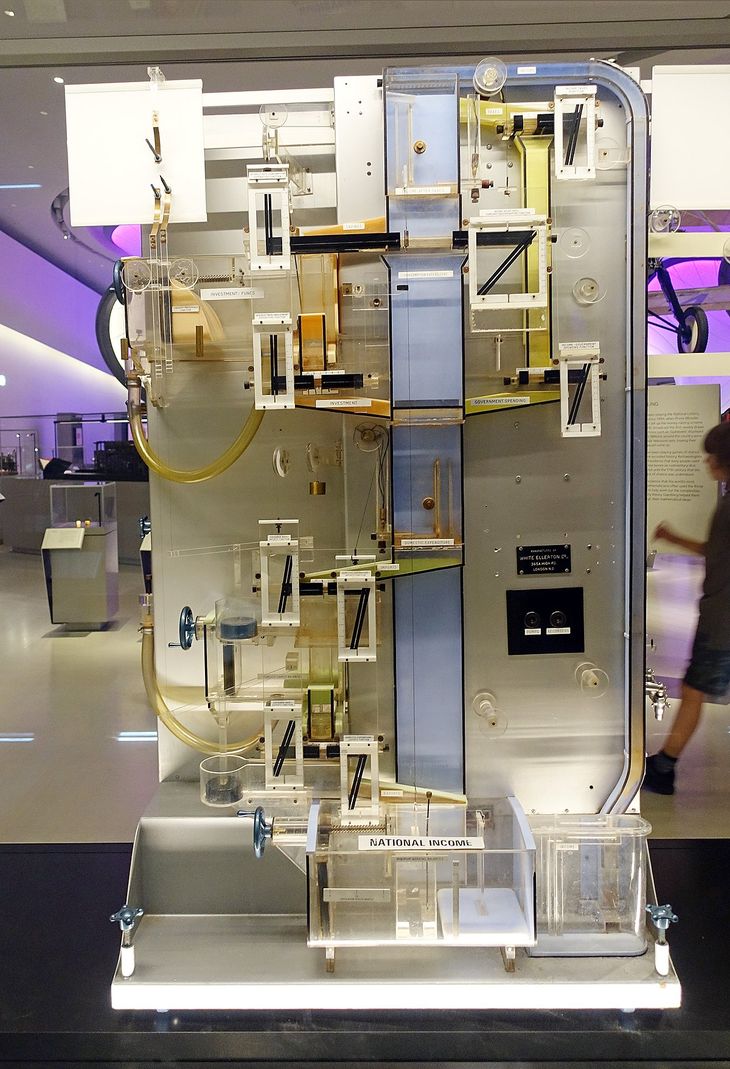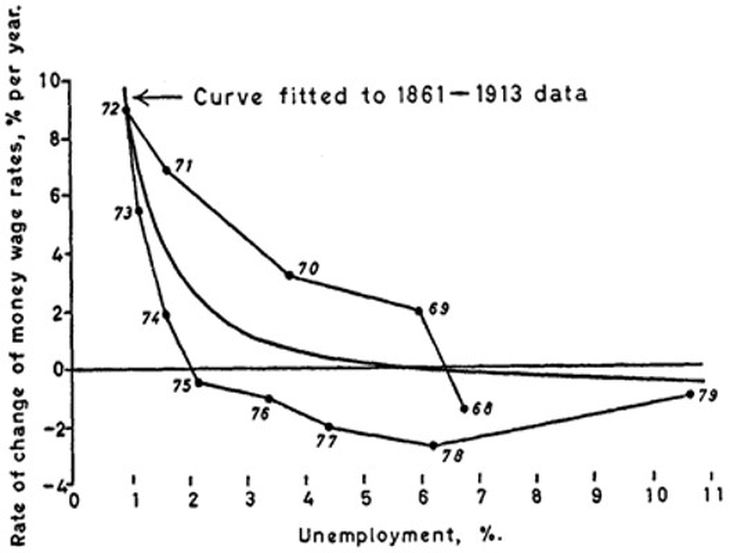Many people talk about the recession, but if something has been “taboo” it is the effect of the Government’s disinflationary plan on unemployment. This leads us to talk about “Phillips curve” that links inflation with employmentbut before seeing the numbers we see the character, who without knowing the author often stops understanding his work.
The adventure begins
It would be 1930 when the son of a New Zealand farmer, with great practical intelligence, but nothing intellectual, decided to travel to England. First Australia where he worked as a crocodile hunter and a cinema manager looking to make “some mangoes”. Then Japan, where he had to escape after inadvertently taking photos of a military base; Korea, China, Manchuria where he again had to flee after the Japanese invasion, Russia, where he almost ended up in a Gulag, Germany and finally London where he arrived at the age of 21.
alban-william-phillips.jpg
Alban William Housego Phillips
Although he had not finished school, Alban William Housego Phillips He had graduated as an engineer while working on his father’s dairy farm – by mail – so he continued his studies, obtaining a degree as an electrical engineer in 1938.
At that time he was bitten by “the economics bug” but when he was about to enter the London School of Economics (LSE), World War II was declared. “Bill”, as his friends called him, enlisted in the air force and was sent to Singapore, almost at the same time that the Japanese invaded Malaysia (his invention of a machine gun system that allowed fighter planes, shoot through the propellers).
a war hero
With the entry of the Japanese into the enclave, the British troops fled on the Empire States transport, under fierce fire from enemy aircraft. Phillips’ heroism during this action earned him a Most Excellent Order of the British Empire, MBE.
Of course it didn’t help him much, because shortly after arriving in Java, the Japanese captured him and sent him to a prison camp for three and a half years. There, he learned Chinese from his camp companions and, what was much more important, he created – among other things – a radio with which they could listen to the BBC and was key to maintaining the morale of the other prisoners in the camp.
An economist is born
At the end of the war “Bill” returned to London. First he entered the school of oriental studies, from there he went to the school of Eastern European studies (he spoke English, French, Mandarin and Russian, with a good command of German, Dutch and Malay) and finally, driven by his fascination with prisoners of war’s ability to organize themselves, he decided to study sociology. It was then that he discovered the works of Keynes and, being an “old man” of 32 years, he went to school in economics.
In 1949, while studying, he created a hydraulic computer in the garage of his house with Walter Newlyn, the MONIAC (Monetary National Income Analogue Computer) as a teaching tool that modeled the economic process of the United Kingdom. The machine was so precise that it immediately began to be used for other economic models, with at least a dozen of them being built, which were donated or acquired by organizations in various parts of the world (there are still several of them that are still in operation today).
1200px-MONIAC_computer.jpg

MONIAC, the world’s first economical computer
This got him the position of associate professor as soon as he graduated, in 1954 he obtained his doctorate and by 1958 he was already a full professor. That year is when he published a “paper” – The relationship between unemployment and the rate of change in wages in the United Kingdom, 1861-1957 -, analyzing the relationship between inflation and unemployment (Irving Fisher had observed it before but did not advance on the matter), finding that when unemployment was high, wages remained stable or fell and on the contrary, when it was low, wages grew rapidly (the theoretical part had been developed in another “paper” from 1954). .
“A rainy weekend”
His principle, that there was a “give and take” between a strong economy and low inflation, quickly captured the attention of Paul Samuelson and Robert Solow, who began to popularize it, analyzing what they called “the Phillips curve” -Phillips never thought of it. gave no title – to the North American economy.
The concept of “what is the Phillip curve?” It has changed over time and with each new author. However, the idea has become one of the paradigms of modern economics and the 1958 “paper” is the most cited in macroeconomics of the 20th century, although its author defined it as just “the work of a rainy weekend.” .
Phillips curve.jpg

The first “Phillips Curve”
That the Swedish Academy did not give him the Nobel Prize while he was alive is undoubtedly one of its greatest injustices. But the irony is that he did not deserve this because of “the curve” but because of his application of “control theory” to the resolution of economic problems. There he identified the importance of expectations and the non-invariance of economic relations, what we today call “the Lucas critique” and the idea of adaptive expectations, which Milton Friedman – his was really embarrassing -, Phillip Cagan, Edmund Phelps, and many others later used it without ever acknowledging it.
By the late 1950s, Phillips’s interest focused on continuous-time econometrics, which was a natural extension of his interest in differential equations (he saw the economy as a system capable of generating dynamic behavior around a equilibrium point) and in the study of developing economies. In 1967 he moved to Australia, and after suffering a heart attack in 1970 he returned to New Zealand where he died in 1975 at age 60.
(Tomorrow: Milei versus Phillips)
Source: Ambito




